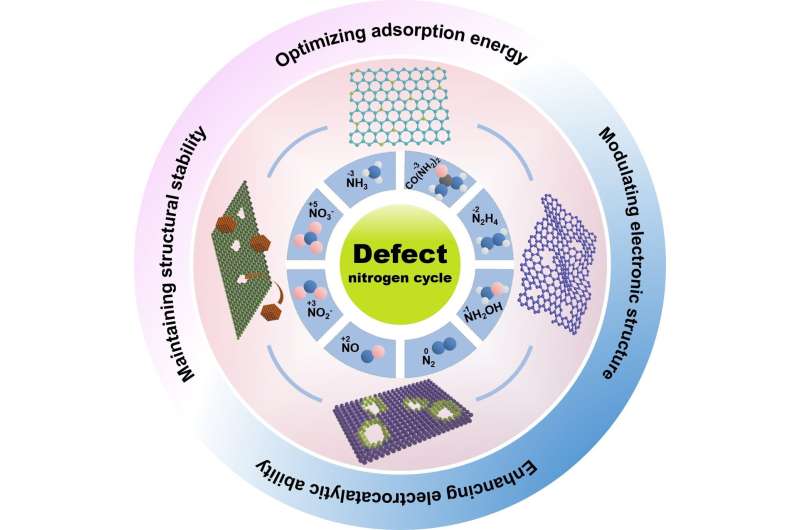This article has been reviewed according to Science X's editorial process and policies. Editors have highlighted the following attributes while ensuring the content's credibility:
fact-checked
trusted source
proofread
Defect engineering for advanced electrocatalytic conversion of nitrogen-containing molecules

The nitrogen cycle, one of the most important biochemical cycles in all ecosystems, plays a key role in human survival and development. It describes the interconversion process between elementary nitrogen substances and nitrogen-containing compounds in nature. Undoubtedly, the redox reactions between these nitrogen-containing molecules maintain the balance of the nitrogen cycle. However, over the past few decades, the nitrogen cycle has gradually been disrupted due to increasing human activities.
Defect engineering, one of the important electrocatalyst modification strategies, has gradually attracted extensive attention of researchers in the field of electrocatalysis. In recent years, the exploration of high-performance electrocatalysts has achieved significant progress by resorting to a defect engineering strategy.
Authors systematically summarize for the first time the latest progress of defect engineering in electrocatalyst modification for advanced electrocatalytic conversion of nitrogen-containing molecules, with special focus on nitrogen reduction reaction (NRR), nitrogen oxidation reaction (NOR), nitric oxide oxidation reaction (NOOR), nitric oxide reduction reaction (NORR), nitrate reduction reaction (NO3-RR), and construction of C-N bonds.
They focus on discussing and understanding the critical role that defects play in electrocatalysts and electrocatalytic reaction processes, mainly including changing the electronic structure of catalysts, enhancing catalyst activity and stability, and optimizing the adsorption energies of reactants and key intermediate species. Finally, the existing challenges and future developmental trends of defect engineering and nitrogen cycling are also predicted.
The findings are published in the journal Science China Chemistry.
More information: Dongdong Wang et al, Defect engineering for advanced electrocatalytic conversion of nitrogen-containing molecules, Science China Chemistry (2022). DOI: 10.1007/s11426-022-1419-y
Provided by Science China Press




















